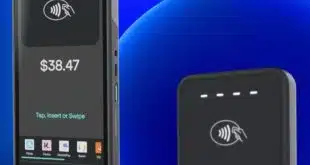Despite the growing popularity of digital wallets, the vast majority of consumers prefer to pay with their debit card at the point of sale, according to research from J.D. Power.
Some 72% of consumers surveyed by Power physically use their debit card at the point of sale or enter their debit account number online or in a mobile app when making a purchase, as opposed to paying with cash, credit cards, or digital wallets.
Consumers under the age of 40 are the most likely users of debit cards (82%) and are most likely to have a favorable view of them (77%). Debit card issuers that perform particularly well with consumers who are under 40 include Capital One, Chase, and U.S. Bank, according to the research. Overall, 68% of respondents said they have a favorable view of debit cards when compared to credit cards, digital wallets, and buy now, pay later loans.

J.D. Power surveyed more than 7,700 consumers in the United States between September and November 2023.
The leading reasons consumers prefer to pay with debit cards include speed of transaction and the ability to track purchases and manage their finances. “Consumers are more averse right now about accruing debt and debit cards can prevent consumers from becoming financially overextended because they use available funds for a purchase,” says Sean Gelles, senior director, payment intelligence, for J.D. Power.
Gelles adds that many debit issuers also provide cardholders with tools to track their spending and budget their finances. When asked why they prefer to pay with a debit card, one-third of respondents cite the ability to track and manage their spending. That reason ranked second to speed and convenience, Gelles says.
Security is another key factor that influences debit card users. Issuers whose customers say keep them fully informed about security policies and protections around their debit cards receive the greatest boost in overall performance. BMO, Capital One, Citibank, and Huntington Bank all receive high rankings in this category, according to Power.
Still, digital wallets have the potential to erode the future use of debit cards at the point of sale, according to the survey. “As digital wallets grow in popularity, there will be a slow deterioration in the share of customers tapping, dipping, or swiping their debit cards at the physical point of sale and manually entering their debit card information into a Web or mobile checkout over time,” the study says.
But the rise in digital-wallet usage will not necessarily result in less overall debit card spend for issuers, because debit cards are used more often in digital wallets than credit cards, J.D. Power says.
“Digital wallets are really not cannibalizing debit cards as they are being tokenized and added to a wallet,” Gelles says. “The challenge for debit issuers lies in the brand relationship they have with the cardholder once they add their card to a digital wallet, which may not be branded by the bank. What debit cards do is provide banks with a branded, everyday payment option that creates a relationship with their customers.”
One challenge facing debit cards at the point of sale is maintaining their brand value as consumers embrace digital wallets. “Issuers will have to find new ways to make themselves indispensable to the customer, possibly by focusing on value-added experiences related to budgeting, security, or rewards, all of which have strong influence on debit card user satisfaction when delivered well,” the study says.
The Power report argues the Paze wallet from Early Warning Services LLC is one way for debit card issuers to meet the brand-value challenge. Paze provides debit issuers an opportunity to maintain relationships with their cardholders because they can apply their brand to the Paze wallet. “Issuers that offer Paze and encourage their active debit card users to enroll should benefit most from a combination of continued spend and brand recognition,” the study says.
“With digital wallets, the branded customer relationship is with the wallet provider, such as Apple Pay,” Gelles says. “With Paze, the bank is behind the concierge aspect of the customer’s relationship with the wallet provider. We see this as an effective strategy.”





